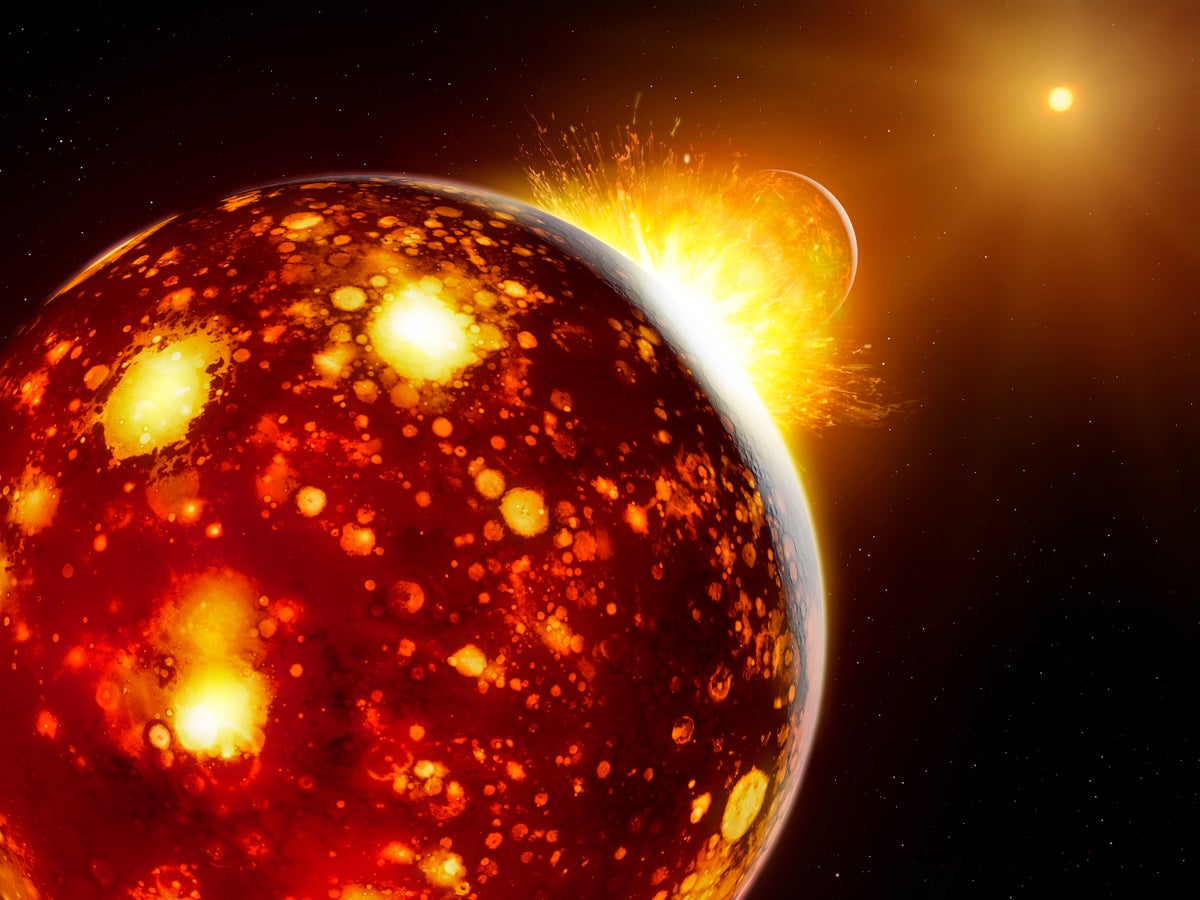
"Roughly four and a half billion years ago the planet Theia slammed into Earth, destroying Theia, melting large fractions of Earth's mantle and ejecting a huge debris disk that later formed the moon. Scientists have long wondered what Theia was made of and where it came from. Now they have evidence that it formed very close to home. The original giant impact model of the moon's creation, proposed in the 1970s, predicted the moon was made mostly of Theia's material."
"Ancient Earth would have had these heavy elements accumulate in its core but not in the rocky mantle closer to the surface, so any iron present now in Earth's mantle likely came from Theia and can tell us about that planet's composition, says study co-author Thorsten Kleine, director of the Max Planck Institute for Solar System Research in Gottingen, Germany."
"Kleine and his colleagues analyzed 15 terrestrial rocks and six lunar samples brought to Earth by Apollo missions. They focused first on iron isotopes: variations of the element with different numbers of neutrons. Rocks and planets in the Solar System share nearly identical distributions of these isotopes, but in the last few years Kleine and some of the new paper's co-authors discovered that certain very tiny deviations from the standard iron isotope ratio can reveal the sample's place of origin."
About four and a half billion years ago a Mars-sized body, Theia, collided with Earth, melting large portions of Earth's mantle and ejecting debris that coalesced into the Moon. The Moon and Earth share unexpectedly similar chemical and isotopic signatures, contradicting models in which the Moon is composed mainly of Theia. Heavy elements such as molybdenum and iron that would have sunk into Earth's core if native to Earth instead appear in the mantle, indicating delivery by Theia. Analyses of 15 terrestrial rocks and six Apollo lunar samples used subtle iron isotope deviations to trace iron's origin and infer Theia's composition and formation location.
Read at www.scientificamerican.com
Unable to calculate read time
Collection
[
|
...
]